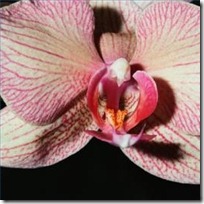Orchids grow in more than 30,000 species in the wild, where they grow in the canopy of both tropical and mountain forests. In home gardening situations, selection is somewhat more limited, with 10 to 20 popular varieties for the homeowner. One of the most common varieties is the Phalaenopsis, or moth orchid, which grows large blooms and may sport up to 10 flowers on a single stalk. Phalaenopsis Artemis orchids bear soft yellow blooms with pink stripes, and always require some specific growing needs.
Difficulty: Moderately Easy
Instructions
Things You’ll Need:
- Peat moss/wood chips/orchid potting soil
- Orchid fertilizer
- Scissors or pruning shears
-
Place your Artemis orchid in a spot where it gets indirect or artificial light all day. Orchids don’t like bright, direct sunshine but do well in south- or north-facing windows where they get softer light. They also grow well under artificial light. Never put your Artemis orchid outdoors.
-
Grow Artemis orchids in loose, airy potting mixes like peat moss, fern matter, wood chips or orchid potting mix. These plants require good air circulation around their roots, with a loose mix that makes root expansion simple.
-
Water Artemis orchids with 1 to 2 inches of water every seven to 10 days. These plants prefer dry conditions with good air circulation and will rot if left to sit in standing water. Put the plant on a weekly watering schedule and check to make sure that the soil is dry before you water. Don’t get water on their leaves or blooms when you water.
-
Feed your Artemis orchid with orchid-specific 3-1-1, 1-1-1 or 5-5-5 fertilizer once a month. Buy premixed fertilizer or mix your own using water-soluble fertilizer, and add the food to a weekly watering. Don’t overfertilize orchids, as they burn easily.
-
Adjust the temperature if necessary. Keep Artemis orchids in spots where they get temperatures between 50 and 70 degrees Fahrenheit, with at least 50 percent humidity. They do well in the average humidity of a home, but won’t survive if you put them outdoors in dry conditions or if they sit next to a heating vent or fireplace.
-
Prune an Artemis orchid only after the blooms have faded and fallen off. Cut the flower stalk back to the nearest growing node, or joint, to encourage a new stalk and blooms. The orchid may bloom again right away or may wait until the next blooming season.
Tips & Warnings
-
Increase orchid feedings when the Artemis orchid is growing new foliage or in bloom. During this period, feed the orchid once a week using standard feeding guidelines to give the orchid the resources it needs for the new growth.


Deprecated: strpos(): Passing null to parameter #1 ($haystack) of type string is deprecated in /home/agriviek8Qv/agriviet.net/public_html/wp-includes/comment-template.php on line 2522